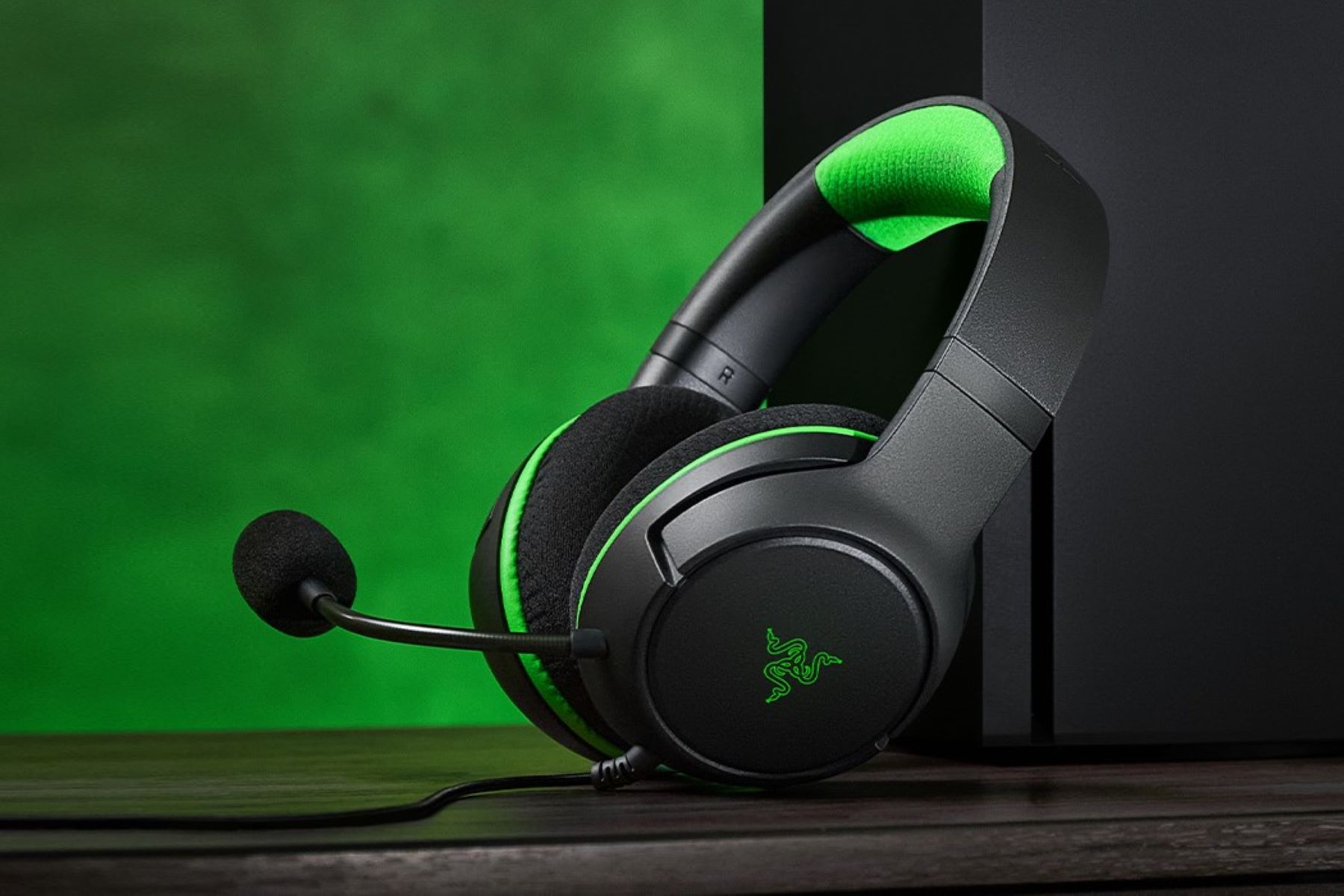Checking Compatibility
Before pairing your Razer headset with your PC, it’s crucial to ensure that both are compatible. This will prevent any potential issues and ensure a smooth setup process. Here’s how you can check for compatibility:
- Operating System Compatibility: Verify that your PC’s operating system is compatible with the Razer headset. Most Razer headsets are designed to work seamlessly with Windows, macOS, and Linux operating systems. Check the product specifications on the Razer website or the headset’s packaging to confirm compatibility with your specific operating system.
- Connection Ports: Identify the connection ports available on your PC and the corresponding ports on the Razer headset. Most Razer headsets utilize USB, 3.5mm audio jacks, or wireless connectivity. Ensure that your PC has the necessary ports to accommodate the headset’s connectivity options. If your PC lacks a specific port required by the headset, you may need to use an adapter or consider alternative connection methods.
- System Requirements: Review the system requirements for the Razer headset. This includes minimum hardware specifications such as processor speed, RAM, and available disk space. Ensure that your PC meets or exceeds these requirements to guarantee optimal performance and compatibility with the headset.
By confirming compatibility based on the operating system, connection ports, and system requirements, you can proceed with confidence, knowing that your Razer headset is well-suited for use with your PC.
Connecting the Razer Headset to the PC
Once you’ve confirmed compatibility, the next step is to connect your Razer headset to your PC. Follow these simple steps to establish the connection:
- Wired Connection: If your Razer headset utilizes a wired connection, locate the appropriate port on your PC. For headsets with USB connectors, insert the USB plug into an available USB port on your PC. If the headset uses a 3.5mm audio jack, insert the plug into the corresponding audio jack on your PC, typically located on the front or rear panel.
- Wireless Connection: For wireless Razer headsets, refer to the manufacturer’s instructions to pair the headset with your PC via Bluetooth or a wireless USB receiver. Follow the pairing process outlined in the headset’s user manual or on the Razer website to establish a stable wireless connection.
- Adjusting Fit: Once connected, adjust the headset for a comfortable fit. Position the ear cups over your ears and adjust the headband for a secure yet comfortable grip. Proper fitment ensures optimal audio delivery and a pleasant wearing experience.
By establishing the appropriate connection, whether wired or wireless, and ensuring a comfortable fit, you’re ready to proceed with configuring the sound settings for an immersive audio experience.
Configuring Sound Settings
After connecting your Razer headset to your PC, it’s essential to configure the sound settings to maximize audio quality and ensure an optimal listening experience. Here’s how to adjust the sound settings:
- Access Sound Settings: On your PC, navigate to the sound settings. In Windows, right-click the speaker icon in the system tray and select “Open Sound settings” to access the sound control panel. On macOS, click the Apple menu, go to System Preferences, and select Sound.
- Select Razer Headset as Default: Once in the sound settings, locate the playback or output devices section. Choose your Razer headset from the list of available audio devices and set it as the default playback device. This ensures that audio output is directed to your headset for an immersive listening experience.
- Adjust Volume and Enhancements: Fine-tune the volume levels to your preference. Additionally, explore any audio enhancements or equalizer settings available in the sound control panel or through the Razer Synapse software (if applicable) to customize the audio output based on your preferences and the type of content you’ll be enjoying.
- Test Audio Output: To verify the configuration, play a sample audio or video file and ensure that the sound is being delivered through your Razer headset. Adjust the settings as needed to achieve the desired audio quality.
By configuring the sound settings, including selecting the Razer headset as the default playback device, adjusting volume levels, and exploring audio enhancements, you can tailor the audio output to your liking and immerse yourself in high-quality sound while using your Razer headset with your PC.
Installing Razer Synapse Software
For a more personalized and enhanced audio experience with your Razer headset, installing the Razer Synapse software is highly recommended. This intuitive software provides access to advanced audio customization features and allows you to unlock the full potential of your Razer headset. Here’s how to install the Razer Synapse software:
- Download Razer Synapse: Visit the official Razer website and navigate to the support or downloads section. Locate the Razer Synapse software for your specific headset model and download the installer file to your PC.
- Run the Installer: Once the download is complete, run the installer file to initiate the installation process. Follow the on-screen prompts to proceed with the installation. Ensure that your Razer headset is connected to your PC during the installation process.
- Create or Sign In to Razer Account: If prompted, create a Razer account or sign in with your existing credentials. This account allows you to access cloud-based storage for your customized settings and profiles, ensuring a seamless experience across multiple devices.
- Complete Installation: Once the installation is complete, launch the Razer Synapse software. Familiarize yourself with the user interface and explore the various customization options available for your headset, including audio enhancements, EQ settings, mic adjustments, and lighting configurations (if applicable).
By installing the Razer Synapse software, you gain access to a suite of powerful tools to tailor your audio experience, create personalized sound profiles, and take advantage of additional features offered by your Razer headset. This software empowers you to customize audio settings to suit your preferences and elevate your overall listening experience.
Customizing Audio Settings
With the Razer Synapse software installed, you can delve into the realm of audio customization to fine-tune your headset’s performance and create a personalized audio profile. Here’s how you can customize the audio settings using Razer Synapse:
- Equalizer Settings: Access the EQ (Equalizer) tab within the Razer Synapse software to adjust the audio frequencies according to your preferences. You can create custom EQ presets or choose from existing presets tailored for various music genres, gaming scenarios, or media consumption.
- Enhanced Surround Sound: If your Razer headset supports virtual surround sound, explore the spatial audio settings to simulate immersive 7.1 surround sound. This feature enhances positional audio in games and provides a more expansive audio environment for movies and music.
- Mic Settings: Customize microphone settings to optimize voice capture and clarity. Adjust mic sensitivity, noise cancellation, and voice clarity settings to ensure clear communication during gaming sessions or voice calls.
- Custom Sound Profiles: Create personalized sound profiles for different usage scenarios. Whether it’s a profile for gaming, music playback, or video conferencing, you can fine-tune audio settings and quickly switch between profiles based on your current activity.
- Lighting and Audio Synchronization (If Applicable): If your Razer headset features customizable RGB lighting, explore the lighting configuration options in Razer Synapse. Synchronize the lighting effects with audio cues or game events for a dynamic visual and auditory experience.
By customizing the audio settings through Razer Synapse, you can tailor the sound output, mic performance, and even lighting effects to align with your preferences and usage scenarios. This level of customization empowers you to create an audio environment that enhances your overall multimedia and gaming experiences.
Troubleshooting Common Issues
While setting up and using your Razer headset with your PC, you may encounter common issues that can be resolved with a few troubleshooting steps. Here are some common issues and their potential solutions:
- No Audio Output: If you’re not getting any sound from your Razer headset, ensure that it’s selected as the default playback device in your PC’s sound settings. Check the physical connections and try plugging the headset into different USB ports or audio jacks. Additionally, verify that the headset is powered on and not muted.
- Microphone Not Working: If the microphone on your Razer headset is not functioning, confirm that it’s set as the default recording device in the sound settings. Check the microphone boom for any physical damage or debris that may be obstructing its operation. Adjust the microphone settings in the Razer Synapse software to ensure optimal performance.
- Intermittent Wireless Connection: For wireless Razer headsets, if you experience intermittent connectivity or audio dropouts, ensure that the headset is within the recommended range of the wireless receiver or the Bluetooth source. Reduce potential sources of interference, such as other wireless devices or physical obstructions, and ensure that the headset is adequately charged or powered.
- Software Compatibility Issues: If you encounter compatibility issues with the Razer Synapse software, ensure that you’ve downloaded and installed the correct version for your headset model and operating system. Check for software updates and verify that your PC meets the minimum system requirements for the software.
- Audio Quality Concerns: If you notice subpar audio quality, double-check the EQ settings in Razer Synapse and adjust them to suit your preferences. Ensure that audio enhancements are enabled, and consider updating audio drivers on your PC for improved compatibility and performance.
By addressing these common issues through troubleshooting steps, you can resolve potential hiccups and ensure that your Razer headset delivers the exceptional audio performance and functionality it’s designed to provide.


